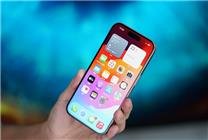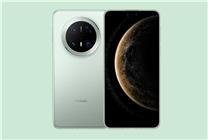The iPhone Weather App: A Double-Edged Sword
Key Takeaways:
- The iPhone weather app offers comprehensive features that go beyond basic temperature readings.
- Users have reported critical inaccuracies in the app’s forecasts, causing frustration among many.
- Apple provides troubleshooting tips to enhance user experience, but satisfaction remains mixed.
With the recent surge in discussions surrounding the iPhone’s built-in weather app, it’s clear that this feature has evoked strong opinions among users. Despite its capabilities, the app’s reliability has drawn scrutiny, sparking debates across social media platforms like Weibo.
Not Just a Temperature Checker
A recent video by a prominent blogger highlighted the utility of the iPhone’s weather application, suggesting that many users underestimate its features. Beyond merely displaying the air temperature, the app provides detailed insights, including:
- Day and night temperature differentials.
- Feel-like temperature readings.
- Ultraviolet (UV) index.
- Wind speed and humidity levels.
For those looking for even more detailed analytics, the app boasts a "professional mode" accessible from the lower left corner. This mode allows users to select specific layers such as precipitation, temperature, and wind, enabling a more dynamic and comprehensive weather forecast experience.
User Discontent: A Common Theme
Despite the app’s extensive features, a significant number of users have expressed dissatisfaction with its accuracy. Many have taken to social media to share their frustrations, suggesting that the forecasts are often misleading.
Comments from users include strong critiques:
- “Those who have used Apple know how inaccurate it is; many resort to downloading alternative apps.”
- “The iPhone’s weather predictions are some of the least reliable.”
- “If I hadn’t tried Apple’s weather, I might have believed the hype. Their claims of accuracy are quite misleading.”
These sentiments reflect an ongoing concern among users who depend on accurate weather information, especially for daily planning.
Issues with Data Updates
Another point of contention lies in the app’s data-refreshing capabilities. Users have reported instances where data isn’t dynamically updated, leaving them with outdated information at critical moments. This limitation has exacerbated user frustrations, prompting calls for enhanced reliability.
Apple’s Response: Troubleshooting Solutions
In light of the criticisms, Apple has stepped in to address user concerns by offering a series of troubleshooting tips. Suggestions include:
- Restarting the device to refresh the app’s functionalities.
- Removing and re-adding the weather widget for better performance.
- Ensuring the device’s operating system is fully updated, with a backup of data advised before any updates.
- Accessing settings to perform a full restore if necessary.
While these measures aim to resolve some of the frustrations users experience, their effectiveness remains to be seen.
Closing Thoughts
The debate over the iPhone’s weather app serves as a reminder of the importance of reliable information in today’s technology-driven world. While the app offers an array of features designed to cater to user needs, its perceived lack of accuracy and data update issues detracts from its overall utility.
As discussions continue, it remains crucial for Apple to prioritize user feedback and work on enhancements to bolster the app’s reliability. The response from the user community will ultimately determine if this tool can evolve into a more trusted source of weather information.
In an age where accurate data is paramount, the expectation for tech companies to deliver dependable applications has never been higher, and the iPhone weather app is no exception.







